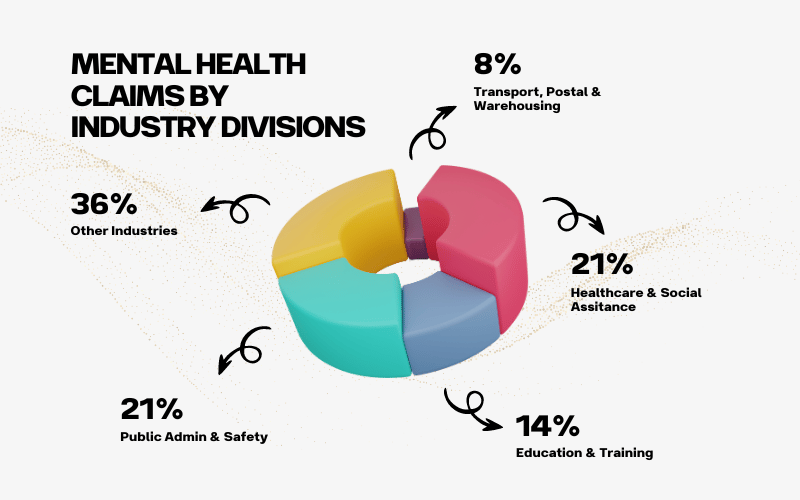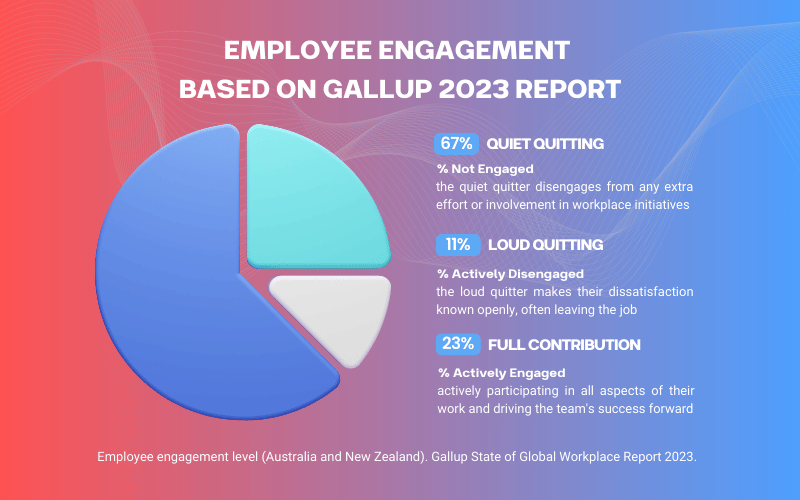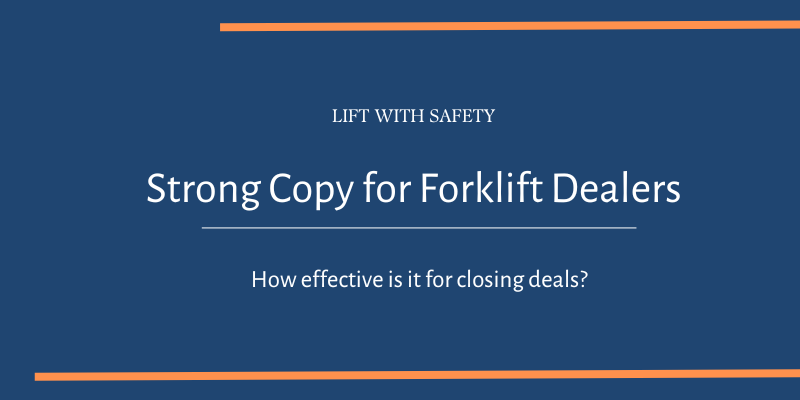Many organisations struggle to understand why their employees experience burnout by the end of the day, resulting in slower work performance, increased exhaustion and higher stress levels. This article explores basic fatigue management strategies to help reduce workplace fatigue, ultimately leading to improved efficiency, job satisfaction and better health.
What is Workplace Fatigue
Workplace fatigue is a state of physical and mental exhaustion that reduces an employee’s ability to perform tasks efficiently and safely. It stems from prolonged work hours, insufficient rest or excessive stress. Workplace fatigue is a prevalent issue affecting employees’ performances and their well-being in Australia.
Statistics on Workers’ Fatigue in Australia
According to the NDS data set by Safe Work Australia, around 9% of worker compensation claims in Australia are related to mental health, with an estimated 92% of these claims being attributed to work-related mental stress.
“Approximately $480 million is paid in workers’ compensation
for work-related mental health conditions in Australia.”

64% of mental health claims arise from 4 out of 19 industry divisions
According to National Transport Insurance’s accident investigation report, fatigue is one of the principal contributing factors in vehicle crashes, accounting for 8.2% of losses in 2022.
Implementing fatigue management strategies such as promoting work-life balance, providing training on stress management, encouraging regular breaks and fostering a supportive work environment can help workers overcome fatigue and safeguard their health in the workplace.
A study by Monash University found that fatigue costs Australian economy an estimated $5 billion annually in lost productivity and health expenses.
How Do I Know if My Workers Are Fatigued
Just as a machine requires regular maintenance to function optimally, humans need to be cared for to maintain their productivity and health.
There should be a designated person in the company responsible for monitoring if an employee is in good health, fatigued or needs help. This role is crucial not only for the employees but also for the overall success of the organisation.
Prolonged fatigue often leads to employees quietly quitting their jobs, often referred to as quiet quitters, usually after experiencing significant stress and exhaustion.

Here are a few signs and symptoms of fatigue that your workers may be experiencing:
- Tasks take longer to complete
- Noticeable drop in the quality of work
- Frequently call in sick or take more leave days
- Increase in mistakes, accidents or near-misses
- A decline in overall workplace morale and enthusiasm
- Employees often mention feeling tired, stressed or overwhelmed
- Reduced participation in meetings and reluctance to take on new tasks
- Higher rates of employees leaving the company
Some minor signs of fatigue:
- Excessive yawning or falling asleep at work
- Short term memory problems
- Ineffective interpersonal communication
- Reduced hand-eye coordination or slow reflexes
- Other changes in behaviour, for example repeatedly arriving late for work
Symptoms that are not obvious to others:
- Feeling drowsy
- Headaches
- Dizziness
- Difficulty concentrating
- Blurred vision or impaired visual perception
- A need for extended sleep during days off work
Identifying and addressing employees’ fatigue levels can lead to a healthier and more productive workforce.
What Types of Fatigue Can Be Experienced in a Workplace
Fatigue in a workplace can manifest in various forms, impacting employees’ productivity and well-being.

Common types of fatigue experienced include:
- Physical fatigue from manual labour
- Mental fatigue from cognitive tasks
- Emotional fatigue from dealing with stress and interpersonal dynamics
Recognising these different types of fatigue is essential in implementing effective management strategies to support employees and enhance overall productivity.
How to Manage Risks Associated with Fatigue?
Managing fatigue in the workplace is a step-by-step process from identifying the factors to monitoring the risks of fatigue.
Here are some common practices in managing the risks associated with fatigue in a workplace:
Factors that contribute to and increase the risk of fatigue
- Long work hours
- Work requiring continued physical effort
- Inadequate rest or recovery time
- High mental or physical workload
- Poor workplace conditions (e.g., lighting, temperature)
- Personal factors (e.g., stress, sleep disorders)
Step 1. Identifying the factors
- Conducting interviews with employees
- Consulting with staff and WHS representative about workloads and schedules
- Checking the control workers have over work hours and breaks
- Analysing sign-in/out sheets and shift changes to spot excessive work hours
- Reviewing workplace incidents, including those during commutes
- Monitoring absenteeism, turnover and compensation claims
Step 2. Assessing the risks
- Determining who may be at risk of fatigue
- Assessing how often fatigue is likely to occur
- Evaluating the severity of harm from fatigue-related incidents
- Determining if applied measures are effective
- Deciding what actions should be taken to control risks
Step 3. Controlling the risks
- Implementing shift rotations and flexible scheduling
- Ensuring adequate rest breaks and recovery periods
- Improving workplace conditions (e.g. environment)
- Promoting healthy sleep and lifestyle habits
Step 4. Training and supervision
- Providing training on fatigue management and awareness
- Offering guidance on healthy practices
- Ensuring supervisors can recognise signs of fatigue
- Encouraging open communication about fatigue-related concerns
Step 5. Monitoring and reviewing
- Regularly reviewing work schedules and workload
- Monitoring the effectiveness of fatigue management strategies
- Updating policies and procedures based on feedback and incidents
- Conducting periodic assessments to ensure ongoing effectiveness
What Are the 6 Basic Fatigue Management Strategies
Fatigue management is essential for maintaining employees’ health, productivity and overall workplace safety. Organisations can implement several strategies to address fatigue effectively. Here are six basic strategies:
1. Design Work Schedules
Create shift schedules that align with natural sleep patterns. Forward-rotating shifts (morning to evening to night) are preferable, and long shifts or excessive overtime should be avoided to ensure adequate rest.
Offer flexible work hours or remote work options to help employees manage their work-life balance better, reducing stress and fatigue.
2. Encourage Adequate Breaks
Implement policies that enforce regular breaks during work hours. There should be, at least, two meal breaks during the regular shift. One of the breaks can be shorter than the other for a quick meal. These breaks will help prevent continuous periods of work that can lead to fatigue.
Also, promote the use of microbreaks, where employees take short breaks to stretch, walk or rest their eyes, particularly during tasks that require sustained concentration or repetitive motions.
3. Implement a Fatigue Risk Management System (FRMS)
Use tools and technologies to monitor fatigue levels among employees. This can include self-reporting mechanisms and regular assessments. Analyse workplace incidents and near-misses to determine if fatigue was a factor. Use this data to refine fatigue management practices and prevent future incidents.
4. Foster a Supportive Workplace Culture
Cultivate an environment where employees feel comfortable discussing fatigue and related issues without fear of negative consequences. Encourage managers to be supportive and approachable.
Develop wellness programs that focus on physical, mental and emotional health. Activities like fitness classes and mindfulness sessions can help reduce overall fatigue.
5. Optimise the Work Environment
Ensure that workstations and equipment are ergonomically designed to minimise physical strain and discomfort. This can include adjustable chairs, desks and proper lighting. Maintain an optimal work environment with comfortable temperatures and controlled noise levels. A well-designed workspace can enhance alertness and reduce fatigue.
6. Implement Fatigue Management Training
Comprehensive Training Programs: Develop and implement training programs that educate employees and managers on the causes, effects and signs of fatigue. These programs should cover the impact of fatigue on health, safety and productivity, and provide practical strategies for managing and mitigating fatigue.
Training for Managers: Ensure that managers receive specialised training on how to recognise signs of fatigue in their team members, how to address it effectively and how to create a supportive environment that prioritises rest and well-being.
Evaluation and Feedback: Regularly evaluate the effectiveness of fatigue management training programs through feedback from participants and performance assessments. Use this feedback to improve the training content and delivery methods.
Combat Workplace Fatigue
Managing your workplace fatigue is important for maintaining productivity and employee well-being. By understanding the fatigue signs, implementing effective workplace policies and maintaining consistent management practices, organisations can create a healthier and more productive work environment.
By regularly maintaining employee well-being, you can expect:
- Lower absenteeism
- Fewer errors and accidents
- Higher employee morale
- Reduced turnover rates
- Increased productivity
FAQs
What is the Most Common Type of Fatigue?
Mental fatigue is often the most common type of fatigue experienced in the workplace. It results from prolonged periods of concentration, decision-making and problem-solving.
What is the Fastest Way to Fix Fatigue?
For physical fatigue, encourage employees to take a 5-minute walk around the office or outside for fresh air. This can boost circulation, increase energy levels, and reduce muscle stiffness.
For mental fatigue, taking a few minutes to focus on deep breathing or a quick meditation can clear the mind and reduce stress, helping to refresh mental focus.
How Fast Can This Process Be?
Implementing effective fatigue management strategies can show noticeable improvements within a few months. Continuous monitoring and adaptation will ensure sustained benefits and a healthier, more productive workforce.
How Often Should We Look Into Managing Workers’ Fatigue?
Fatigue management should be an ongoing process, with regular assessments and interventions. A good practice is to review fatigue management policies yearly or when there any major changes in the workplace and conduct employee surveys bi-annually to gauge fatigue levels.
Recommended Fatigue Management Intervals:
| Task | Frequency |
| Employee Surveys | Bi-annually |
| Wellness Program Reviews | Yearly |
References:
https://www.hrleader.com.au/people/23877-are-employee-surveys-a-waste-of-time
http://www.safework.nsw.gov.au/__data/assets/pdf_file/0013/403150/forklift-safety-factsheet-SW08946.pdf
https://employsure.com.au/blogv3/quiet-quitting-what-do-you-need-to-know
https://www.monash.edu/medicine/news/latest/2014-articles/fatigue-related-injury.html
https://www.linkedin.com/pulse/link-between-compassion-fatigue-quiet-quitting-bonita-eby
https://www.gallup.com/workplace/506879/state-global-workplace-2023-report.aspx
https://www.safeworkaustralia.gov.au/system/files/documents/1702/managing-the-risk-of-fatigue.pdf
https://www.nti.com.au/getmedia/f11ed5ef-67bb-4c38-a6d4-8c76c4a77d6b/NTI-M129-1-092022-NTI-NTARC-2022-Report-digital.pdf
https://www.worksafe.vic.gov.au/risk-management-approach-fatigue
https://spiresafety.com.au/monitoring-and-reviewing-whs-fatigue-policies-for-the-workplace-in-australia/


